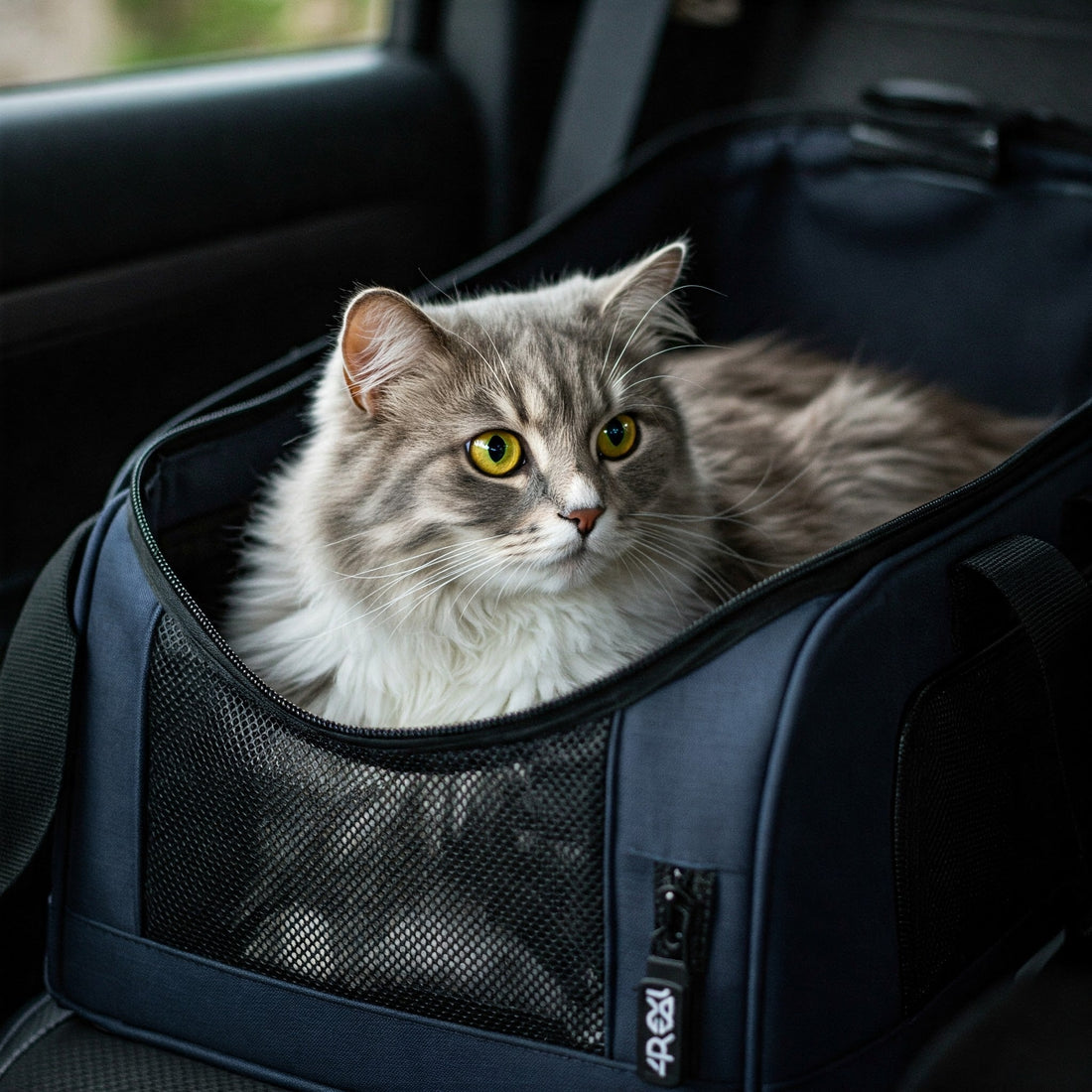
The Secret to Stress-Free Cat Travel? Choosing the Right Carrier (Vet-Approved Tips)
Share
The moment your cat sees the carrier emerge from storage, their pupils dilate into black saucers, their body tenses like a coiled spring, and suddenly your normally graceful feline transforms into a liquid creature determined to flow into the most inaccessible crevices of your home. This universal feline response reveals a profound truth: most carriers are designed for human convenience rather than feline comfort. The right carrier bridges this divide, transforming from a dreaded prison into a mobile sanctuary that keeps your cat secure while respecting their instincts and dignity. Whether it's a quick trip to the vet or a cross-country move, the carrier you choose becomes your cat's temporary territory—a portable slice of safety in an unpredictable world.

Material selection forms the first critical decision. Hard-sided plastic carriers, the standard issue from veterinary offices, offer durability and protection with their rigid walls and metal grate doors. Their solid construction prevents collapses in tight spaces and provides insulation against temperature extremes, while the ventilation holes maintain airflow without creating stressful drafts. Yet these practical boxes often fail feline psychology; the opaque walls that provide privacy also eliminate visual orientation, leaving cats feeling blindfolded in a moving world. Soft-sided carriers, by contrast, offer a compromise between structure and comfort. Their flexible walls allow the carrier to conform to a cat's body during moments of stress, creating a swaddling effect that can be calming. Mesh panels provide visibility and superior airflow, though at the cost of reduced privacy and protection from external stimuli. For car travel, hybrid carriers with rigid bases and soft tops combine the stability cats need with the breathability they prefer.
Size considerations extend far beyond simple measurements. A carrier should allow your cat to stand, turn around, and lie down comfortably—but not so spacious that they become projectiles during sudden stops. This balance proves especially crucial for air travel, where under-seat dimensions impose strict limits. The common advice to "buy the largest carrier possible" backfires when terrified cats slide uncontrollably during turbulence or sharp turns. For growing kittens, adjustable carriers with removable dividers accommodate growth spurts without requiring multiple purchases. Weight matters too—bulky designs loaded with a fifteen-pound cat become logistical nightmares during airport sprints or subway transfers. The sweet spot exists where safety, comfort, and practicality intersect.

Entry points transform a simple box into an accessibility puzzle. Top-loading carriers provide the gold standard for stress-free loading, allowing you to place rather than push a reluctant cat inside—a game-changer for vet visits. Front-opening models require more feline cooperation but facilitate easier transfers at security checkpoints. Innovative designs now offer multiple entry options, recognizing that different travel scenarios demand different approaches. The door mechanism itself warrants scrutiny—plastic latches should withstand determined escape attempts, while zippers need protective flaps to prevent clever paws from discovering exit strategies mid-journey. For chronically resistant cats, carriers with removable tops eliminate the traumatic "stuffing" process entirely.
Ventilation represents an often-overlooked lifeline. The minimum requirement of a few small holes fails cats during stress-induced panting or temperature fluctuations. Optimal airflow designs incorporate mesh panels covering at least two sides, with openings small enough to contain paws but large enough to prevent claustrophobia. Elevated mesh bases improve undercarriage air circulation—critical during summer travel or in overheated vehicles. For airline-approved carriers, ventilation specifications become non-negotiable; each airline publishes precise requirements about hole size and distribution that can mean acceptance or rejection at check-in.
Comfort features elevate functional containers to mobile sanctuaries. Removable, machine-washable pads address inevitable accidents, while moisture-wicking fabrics help regulate temperature. Pheromone-impregnated liners can provide chemical calm for anxious travelers. Some high-end models incorporate noise-reducing materials to dampen the jarring sounds of travel, while others feature privacy flaps that can be adjusted based on your cat's preference for visibility versus seclusion. For older cats or those with mobility issues, low-entry thresholds reduce the strain of embarkation, while orthopedic padding supports arthritic joints during prolonged confinement.

Car Seat Waterproof Travel Carrier
Safety certifications separate marketing claims from genuine protection. For car travel, carriers should ideally meet crash-test standards—an unsettling consideration but necessary for frequent travelers. Airline-approved designs must comply with International Air Transport Association (IATA) specifications if used for cargo hold transport, though cabin requirements vary by carrier. Reflective strips or bright colors aid visibility during nighttime emergencies, while secure anchor points allow seatbelt threading in cars or leash attachment in unpredictable environments.
The psychological dimension of carrier training cannot be overstated. The finest design fails if the cat only encounters it during stressful events. Progressive acclimation—leaving the carrier out with cozy bedding, feeding meals inside, and incorporating play sessions around it—transforms the object from threat to neutral territory. Synthetic pheromone sprays applied periodically reinforce calm associations. For particularly resistant cases, carrier alternatives like harness training (for car travel) or clicker-assisted conditioning may be necessary, though these require extensive preparation.

Specialized scenarios demand tailored solutions. Frequent flyers benefit from carriers with expansion features—collapsible sides that provide extra space during layovers. Urban dwellers navigating public transit might prioritize backpack-style carriers that free hands while distributing weight ergonomically. Show cats or therapy animals requiring constant travel often graduate to customized rolling carriers with integrated litter areas. For emergency preparedness, carriers with quick-grab handles and pre-stashed supplies become literal lifesavers during evacuations.
Cleaning and maintenance preserve the carrier's integrity and appeal. Hard-sided models permit thorough disinfecting but may retain odors in plastic pores over time. Soft carriers often feature removable, washable liners but require careful drying to prevent mildew. All carriers benefit from periodic inspection of stress points—zipper teeth, latch mechanisms, and weight-bearing seams that degrade with use. Having a backup carrier ensures availability during cleaning while maintaining the primary carrier's familiar scent profile.
Ultimately, the right carrier reflects an understanding of your cat's unique personality and needs. What comforts one cat might terrify another—some prefer fully enclosed dens, others need maximum visibility. By prioritizing safety while respecting individual preferences, the carrier becomes not just a transport tool but an extension of your cat's territory—a portable piece of home that makes the wider world less intimidating. In this careful selection lies the difference between a cat who arrives wide-eyed with fear and one who emerges calm, curious, and ready to explore.
